Identifying Whales
You’ve been dreaming of seeing whales in the wild, so you’ve decided to go whale watching in Anacortes, Washington! Great choice! But what kind of whales will you see? There are four species of whales that frequent the inland ocean known as the Salish Sea: The humpback, gray, minke, and orca. Depending on the time of year you go whale watching, Washington State has different wildlife to offer (see our blog post on “What is the best time of year to go whale watching” for more info). However, no matter when you choose to get out on the water, there are strategies for identifying what kind of whale you are looking at when you are on-scene with these gentle giants. Read more to learn what our captains and naturalists look for on the water to not only identify the species of whale we are looking at, but even the individual or group of individuals we are seeing!
Which Whale?
Before you narrow down a whale to an individual it is best to first figure out what species or type of whale you are looking at. Fortunately here in the Salish Sea, each of the four species are highly distinguishable, even from a distance.
Orcas
Orcas or killer whales have the most distinct dorsal fins of these four species. Ranging from 3-6 feet tall, these triangular shapes cutting through the (often) smooth, glassy surface of this island-dotted sea are hard to mistake. Orcas typically travel in groups (although, not always), so there are usually multiple fins surfacing around the same area.
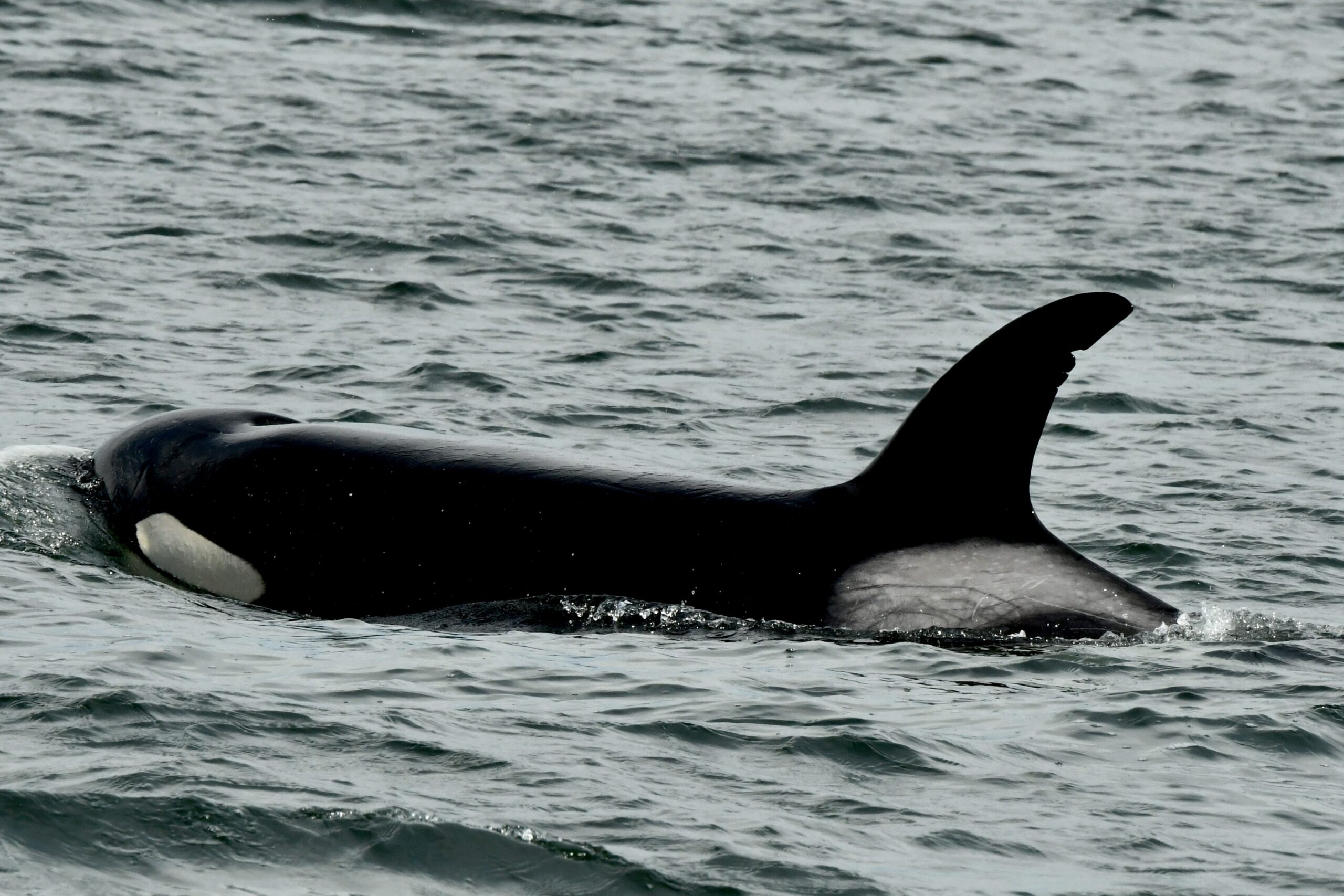
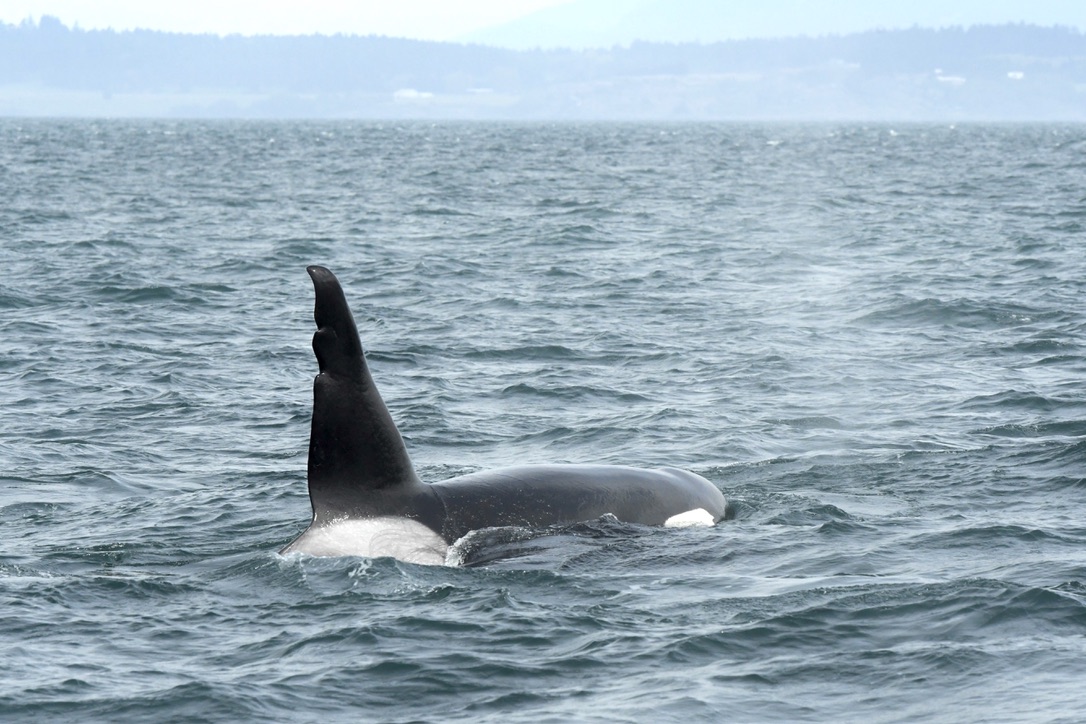
Humpbacks
If you see a tall, columnar-like cloud burst up from the water’s surface, you more than likely just saw the blow of a humpback! Unlike the blows of a gray or minke whale, humpbacks have a blow that can reach up to 30 feet high and can be seen from well over a mile away! Upon closer inspection, humpbacks have a solid black back with a tiny, triangular dorsal fin on their back. When diving deep, they arch their backs into a hump (hence the name “humpback!”) and will usually show onlookers their tail flukes, which are black, white, or a combination of both on the underside.
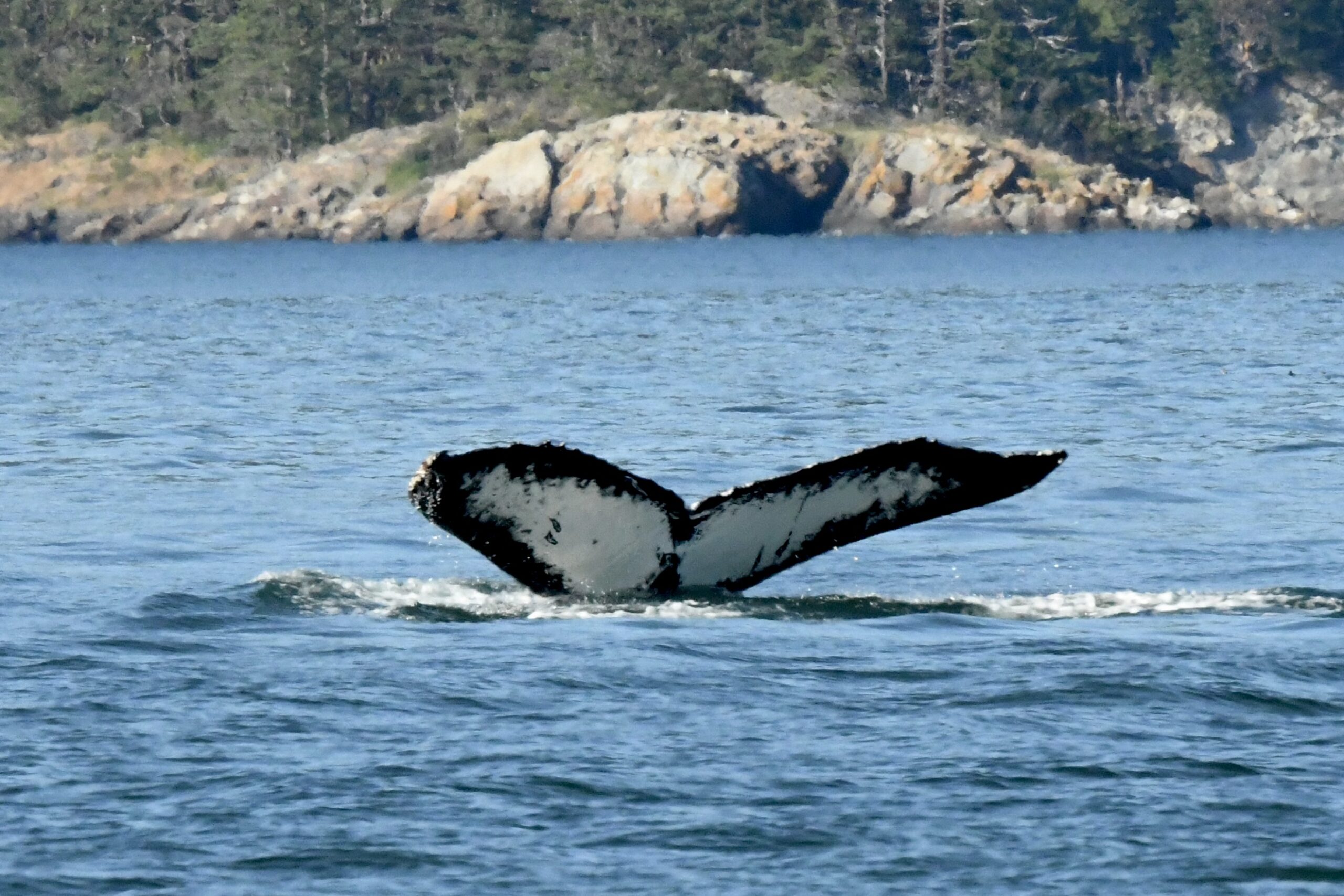
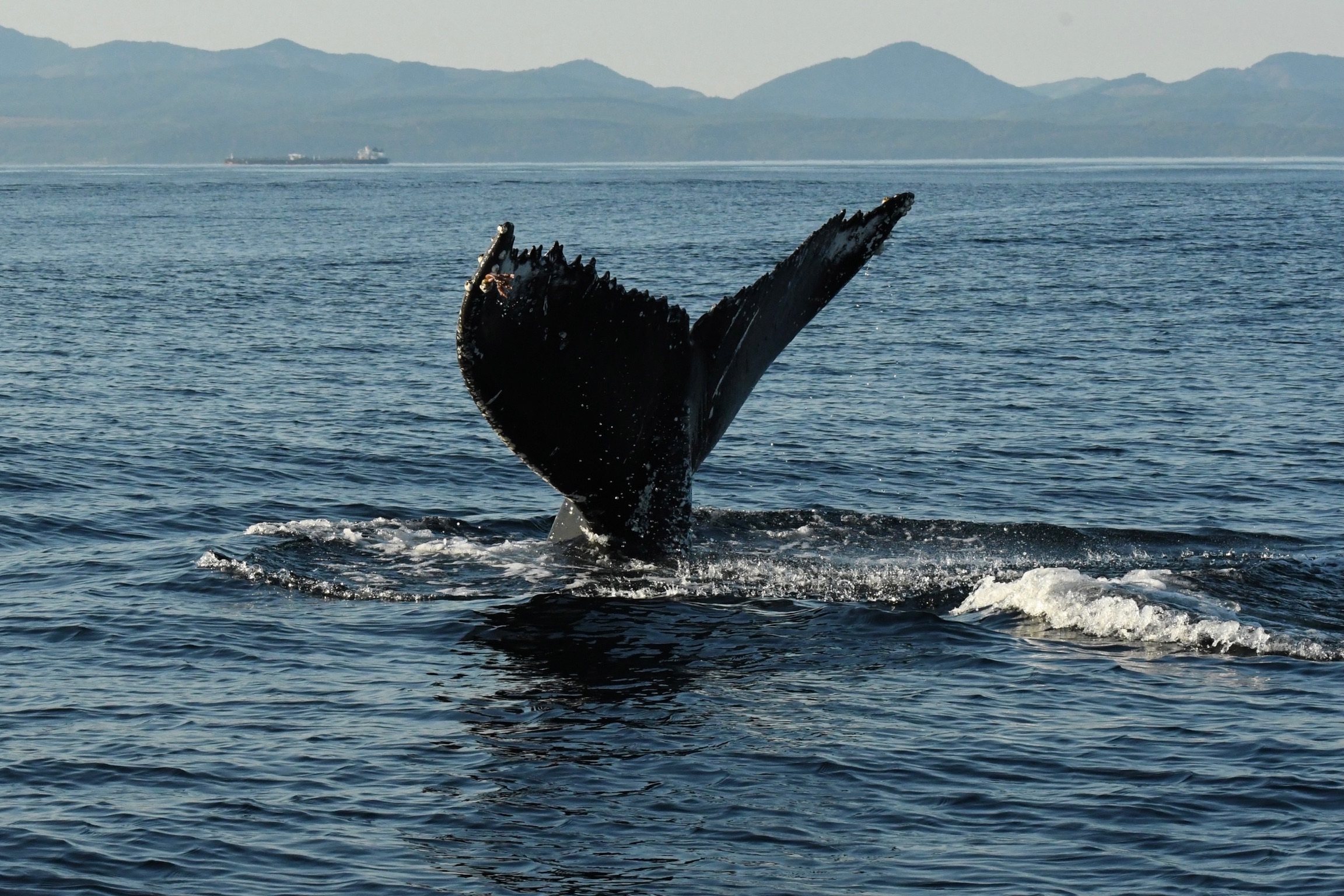
Grays
A shorter, bushy blow in the distance typically indicates that you are coming up on a gray whale! In the right conditions (little to no wind), a gray whale’s blow is distinctly heart-shaped. This is due to the position that their blowholes sit on their head. Closer to the animal, gray whales are (as their name indicates) gray in coloration with distinct white mottling and lots of barnacles. Grays don’t have dorsal fins, but rather several knuckles that run along the back third of its body.
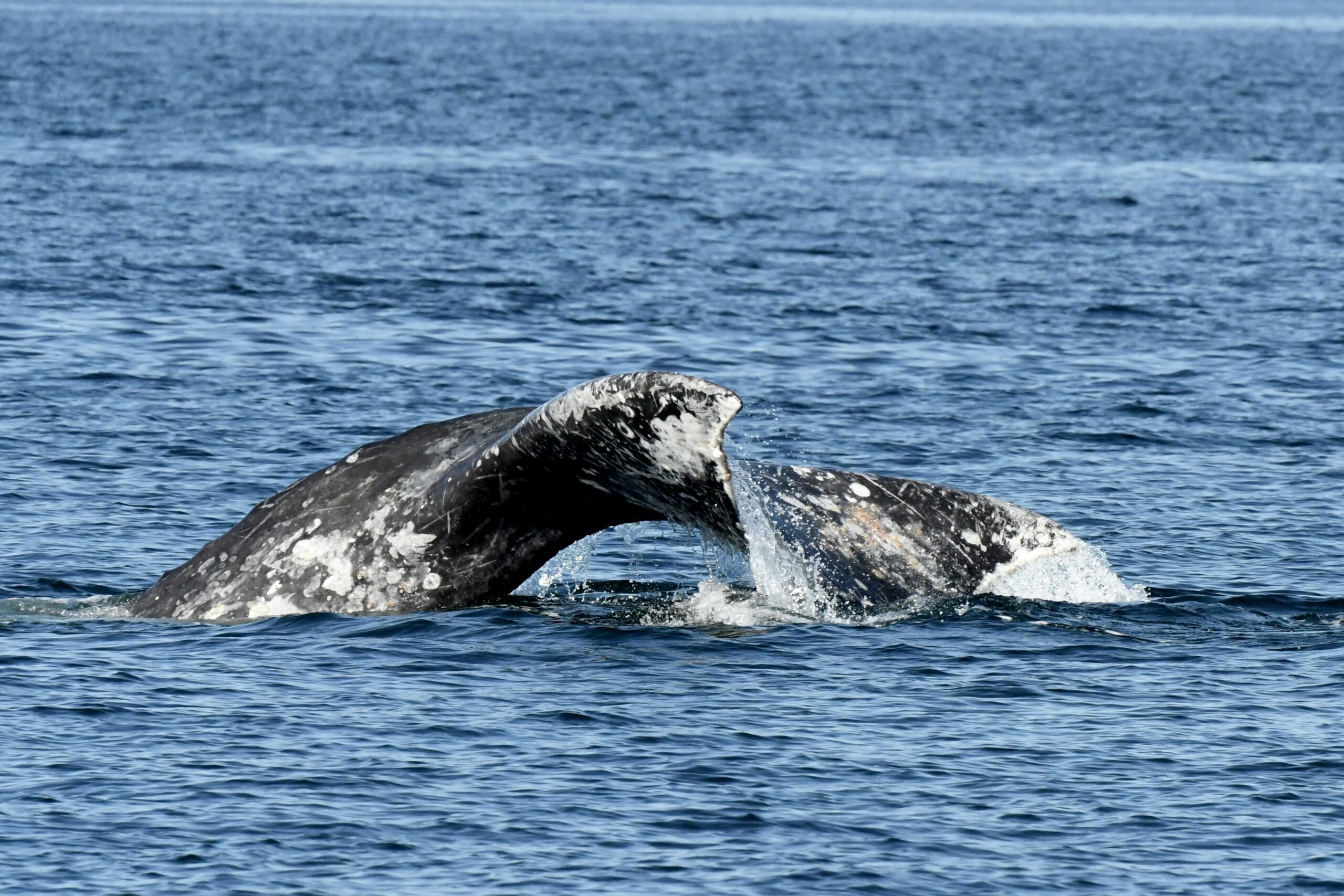
Minkes
The minke whale may be the most difficult of the four to find because it tends to keep a low profile to the water and doesn’t have a very tall or distinctive blow. However, their smooth black backs are followed by a highly sickle-shaped dorsal fin that allows whale watchers to determine that they are looking at a minke. Minkes in this area tend to feed using a strategy called lunge feeding. This is where they lunge out of the water slightly at their prey, giving onlookers a chance to see their head and baleen through their open mouth!
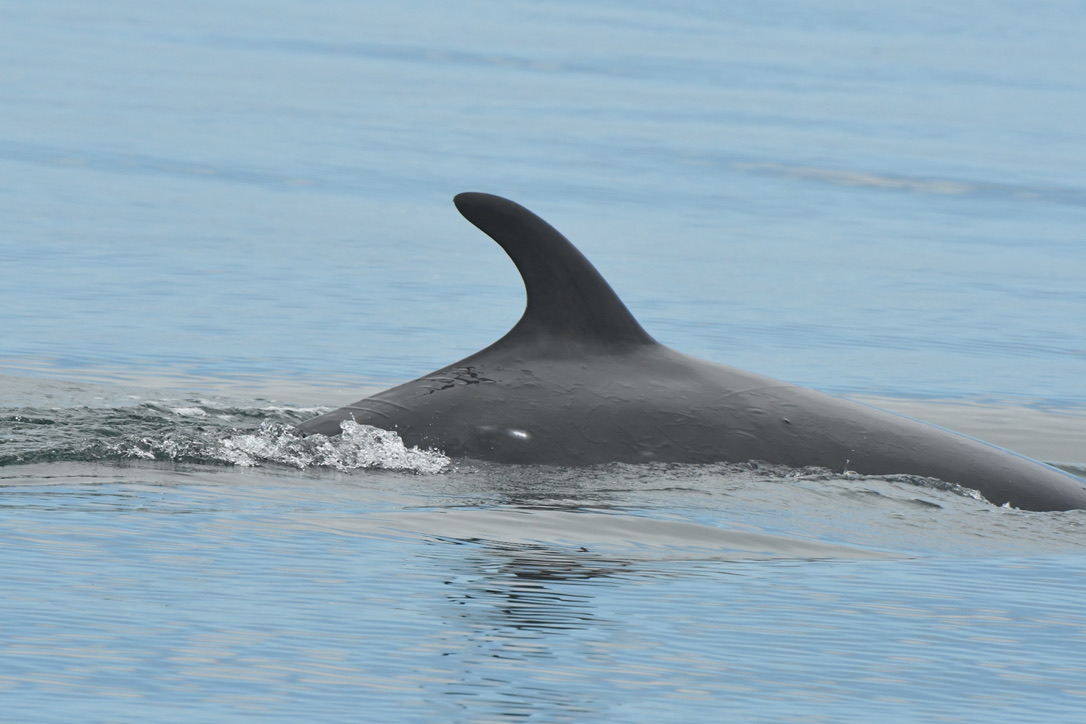
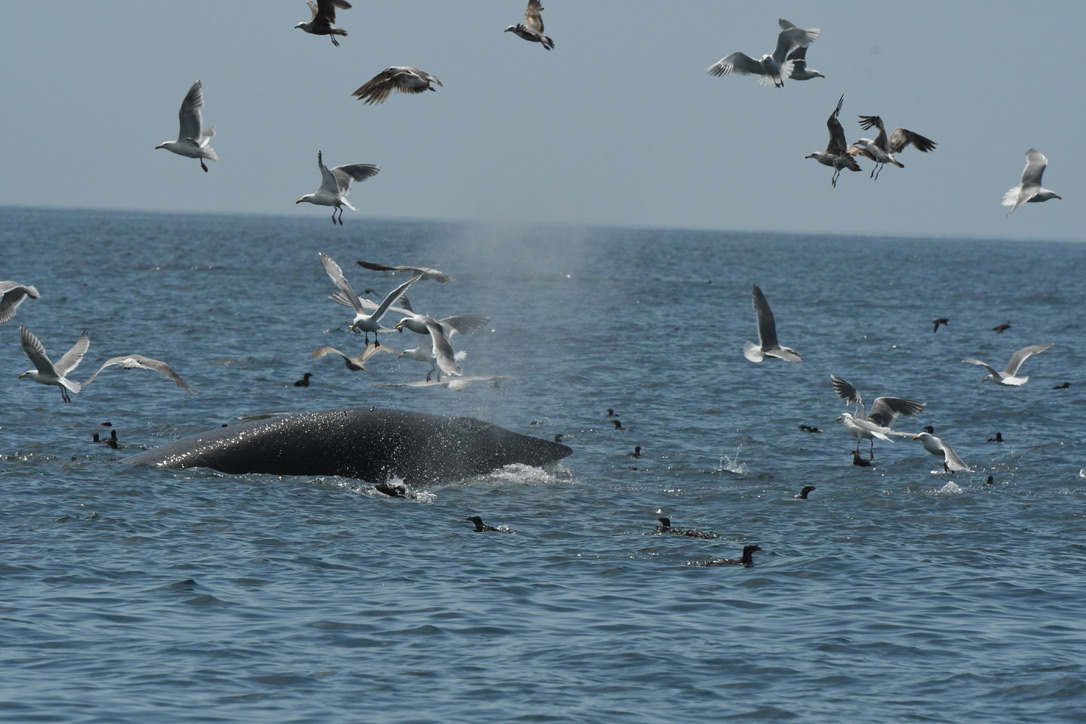
Who am I looking at?
Scientists have found that most cetaceans can be identified down to the level of the individual. This was discovered using photo-identification. This is a technique using photographs of whales in a population and comparing them to past years’ photos to determine a family and/ or an individual.
How easy it is to identify an individual whale largely depends on the person and how much practice they have at doing so. For killer whales and minke whales, the dorsal fin and markings around their dorsal fin are the most telling. Nicks and notches taken out of the trailing edge of dorsal fins can help scientists, naturalists, and others who they’re looking at. Orcas have several white markings around their body which are unique to the individual as well. These are their saddle patches (whitish-gray marking behind their dorsal fin) and their eye patch (white marking on their head region). Differences in a minke whale’s body pigmentation can also be a helpful indicator to the trained eye.
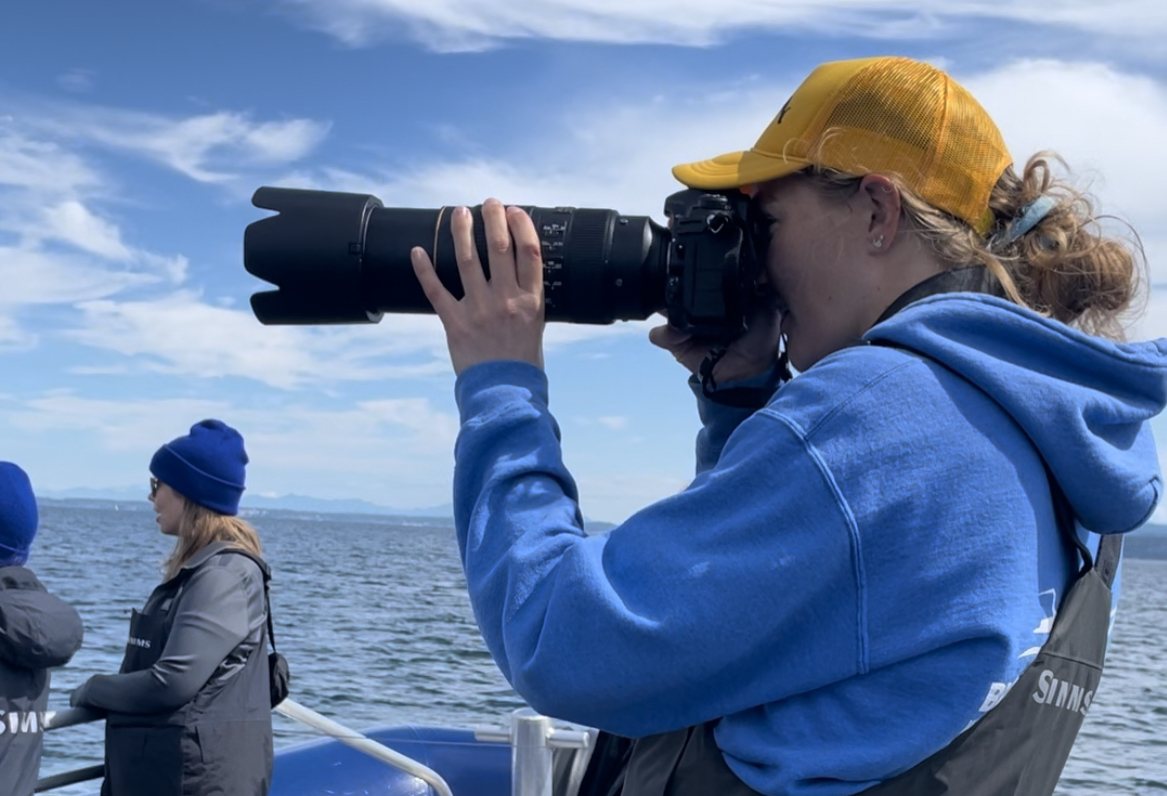
Grays and humpbacks are most often identified by looking at their tail flukes. Both these species are known for their tails coming mostly or all the way out of the water just before they go on deep feeding dives. Photos of the underside of their tails (flukes) are as telling as going and getting your fingerprints taken. Humpbacks have distinct patterns of black and white on the underside of their flukes. Gray whales have mottling patterns in their pigment that remain consistent their whole lives on their flukes. These fluke patterns and nicks and notches taken out of their tails (usually by attempted predation events by killer whales) allow researchers and naturalists alike to identify individual humpbacks and grays.
Join a tour!
In the Salish Sea, tours will take you to various places where the likelihood of finding any four of these species is high. We are always scanning the water for signs of whales in the area, as well as communicating with other whale watch operators in the area through the Pacific Whale Watch Association. Here in the northwest we feel very fortunate, as most days we operate we find whales! We can’t wait to share our epic whale experiences with you!

